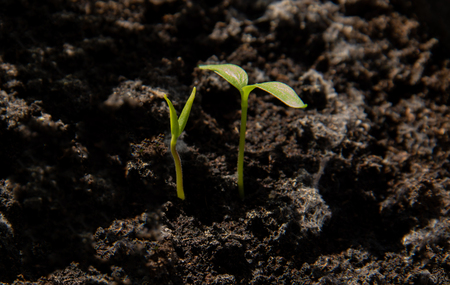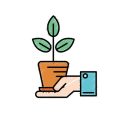1. Understanding Frost Dates Across the U.S.
When it comes to spring planting, knowing your local frost dates can make all the difference. A “frost date” refers to the average date of the last light freeze in spring or the first light freeze in fall. For gardeners, especially those starting seeds, understanding these dates is essential to avoid planting too early and risking damage from a late frost.
Why Frost Dates Matter
Frost can kill tender seedlings and set back your growing season by weeks. By waiting until after your areas average last frost date, you give your plants a better chance to thrive. On the flip side, if you plant too late, you might miss out on your region’s full growing potential. Timing is everything!
How Frost Dates Vary by Region
The United States spans multiple climate zones, so frost dates vary widely depending on where you live. Here’s a general look at average last frost dates across different regions:
| Region | Average Last Frost Date |
|---|---|
| Northeast (e.g., New York, Boston) | Mid-April to Early May |
| Midwest (e.g., Chicago, Minneapolis) | Late April to Mid-May |
| Southeast (e.g., Atlanta, Charlotte) | Late March to Mid-April |
| Southwest (e.g., Phoenix, Las Vegas) | Early March to Late March |
| Pacific Northwest (e.g., Seattle, Portland) | Mid-March to Mid-April |
| California Coast (e.g., San Francisco, Los Angeles) | Rarely experiences frost |
Finding Your Local Frost Dates
You can easily find your area’s average last frost date by entering your ZIP code on websites like the USDA Plant Hardiness Zone Map or using tools from trusted sources like the Old Farmer’s Almanac. These tools are based on historical weather data and help take the guesswork out of planning your garden schedule.
Pro Tip:
Keep in mind that “average” means theres still a chance of frost after this date. Always check your local weather forecast before planting outdoors—especially when dealing with delicate vegetables or flowers.
2. How to Find Your Local Frost Dates
Knowing your local frost dates is key to planting your seeds at just the right time in spring. Planting too early can leave tender seedlings vulnerable to frost, while planting too late may shorten your growing season. Here’s how you can easily find accurate frost dates for your specific area.
Use Online Tools
There are several reliable websites that let you search for frost dates using your ZIP code. These tools are easy to use and give both the average last spring frost and the first fall frost. Some popular options include:
| Website | What It Offers |
|---|---|
| Old Farmer’s Almanac | Enter your ZIP code to get average last and first frost dates, plus a planting calendar. |
| National Gardening Association | Detailed freeze date data based on historical weather records. |
| NOAA Weather Service | Up-to-date forecasts and climate data, including frost alerts. |
Check With Local Extension Services
Your local Cooperative Extension Office is a great resource for region-specific gardening information. They often provide downloadable planting guides tailored to your areas climate and growing zone. You can find your local office through this USDA directory.
Use Regional Planting Calendars
Many gardening centers, state universities, and even seed companies publish regional planting calendars that include frost dates and suggested sowing times. These calendars take into account local weather patterns and are ideal for planning a successful garden.
Why ZIP Code Matters
Frost dates can vary significantly even within the same state due to elevation, proximity to water, and urban heat effects. That’s why searching by ZIP code gives you the most precise information for your backyard garden.
Pro Tip:
If youre starting seeds indoors, use the last spring frost date as a guide for when to transplant outdoors. Count backward from that date according to each plants recommended indoor germination period.
By using these tools and resources, youll be better equipped to start your garden off strong and avoid losing plants to unexpected cold snaps.

3. Cool-Season vs. Warm-Season Crops
When planning your spring garden around frost dates, it’s essential to understand the difference between cool-season and warm-season crops. These two types of plants have different temperature needs and levels of frost sensitivity, which directly affect when you should plant them.
What Are Cool-Season Crops?
Cool-season crops are vegetables that grow best in cooler temperatures, typically between 40°F and 70°F. They can tolerate light frosts and are often planted before the last expected spring frost date. In fact, some of them even taste better after a light frost!
Examples of Cool-Season Crops:
| Vegetable | Ideal Planting Time | Frost Tolerance |
|---|---|---|
| Lettuce | 2–4 weeks before last frost | Tolerates light frost |
| Spinach | 4–6 weeks before last frost | Tolerates hard frost |
| Peas | 4–6 weeks before last frost | Tolerates light frost |
| Broccoli | 2–3 weeks before last frost | Tolerates light frost |
| Cabbage | 4–6 weeks before last frost | Tolerates hard frost |
What Are Warm-Season Crops?
Warm-season crops need warmer soil and air temperatures to thrive. These plants are sensitive to frost and should only be planted after all danger of frost has passed. Planting them too early can result in stunted growth or even loss of the crop.
Examples of Warm-Season Crops:
| Vegetable | Ideal Planting Time | Frost Sensitivity |
|---|---|---|
| Tomatoes | 1–2 weeks after last frost | Killed by frost |
| Corn | 1–2 weeks after last frost | Sensitive to cold soil |
| Cucumbers | 2 weeks after last frost | Killed by frost |
| Zucchini (Summer Squash) | 1–2 weeks after last frost | Killed by frost |
| Peppers | 2 weeks after last frost | Killed by frost |
Why Timing Matters
The key takeaway here is that planting too early or too late can affect both germination and yield. Cool-season crops may bolt (go to seed) if planted too late, while warm-season crops simply won’t survive if exposed to cold temperatures or unexpected frosts. Knowing your local average last spring frost date helps you determine exactly when it’s safe to start sowing each type of crop.
Tip:
If youre eager to get a head start on warm-season crops, consider starting seeds indoors 6–8 weeks before your last expected spring frost. Then transplant them outside once its consistently warm.
4. Starting Seeds Indoors: Getting a Head Start
Starting seeds indoors is one of the best ways to get ahead of unpredictable spring weather and extend your growing season. By planting seeds inside, you can give tender seedlings a safe environment to grow strong before transplanting them outdoors after the last frost date in your area.
Why Start Seeds Indoors?
Indoor seed starting gives you more control over growing conditions such as light, temperature, and moisture. It also helps you avoid the risk of losing young plants to late spring frosts. Plus, it allows you to grow varieties that need a longer growing season than your region might naturally allow.
When Should You Start?
The timing for starting seeds indoors depends on your local average last frost date and the type of plant youre growing. Most seed packets will tell you how many weeks before the last frost to start seeds indoors. Use the table below as a general guide:
Seed Starting Timeline (Before Last Frost Date)
| Plant Type | Weeks Before Last Frost |
|---|---|
| Tomatoes | 6–8 weeks |
| Peppers | 8–10 weeks |
| Broccoli | 5–7 weeks |
| Lettuce | 4–6 weeks |
| Cucumbers | 3–4 weeks |
Basic Supplies Youll Need
You dont need fancy equipment to start seeds indoors. Heres what youll need:
- Seeds: Choose varieties suited for your region and growing goals.
- Containers: Seed trays, pots, or even recycled containers with drainage holes.
- Seed-starting mix: A lightweight, well-draining soil designed for germination.
- Light source: A sunny windowsill or grow lights to provide adequate light.
- Watering tool: A spray bottle or small watering can for gentle watering.
Tips for Successful Indoor Starts
- Label everything: Its easy to forget whats what once seedlings sprout.
- Keep soil moist but not soggy: Overwatering can lead to mold or damping-off disease.
- Mimic natural light cycles: Provide 12–16 hours of light per day using grow lights if needed.
- Use a heat mat: Some seeds germinate faster with bottom heat, especially peppers and tomatoes.
Next Steps: Hardening Off Your Seedlings
A week or two before transplanting outdoors, gradually expose seedlings to outdoor conditions—a process called “hardening off.” This helps them adjust to sun, wind, and fluctuating temperatures so they’re ready for life in the garden once the danger of frost has passed.
By learning when and how to start seeds indoors based on your local frost dates, youll set yourself up for a successful and productive gardening season while keeping your young plants protected from late frosts.
5. Hardening Off and Transplanting Outdoors
Once your seedlings have sprouted indoors and the last expected frost date has passed, its almost time to move them outside. But before you do, theres an important step you shouldn’t skip: hardening off.
What Is Hardening Off?
Hardening off is the process of gradually introducing your indoor-grown seedlings to outdoor conditions. This helps prevent transplant shock caused by sudden exposure to sunlight, wind, and fluctuating temperatures. Think of it as training your plants to handle the real world one day at a time.
How to Harden Off Your Seedlings
Start this process about 7–10 days before you plan to transplant. Follow this simple schedule:
| Day | Time Outdoors | Conditions |
|---|---|---|
| Day 1–2 | 1–2 hours | Shaded spot, no wind |
| Day 3–4 | 2–4 hours | Dappled sunlight, light breeze |
| Day 5–6 | 4–6 hours | Partial sun, increase exposure to elements |
| Day 7–8 | 6–8 hours | Full sun part of the day, moderate wind ok |
| Day 9–10 | All day & overnight (if temps are safe) | Full sun and outdoor conditions |
When to Transplant Outdoors
The best time to transplant is after the last average frost date in your area. You can find your local frost dates using resources like the USDA Plant Hardiness Zone Map or local extension offices.
Transplanting Tips:
- Choose a cloudy day or late afternoon: This reduces stress from direct sunlight.
- Water seedlings well before transplanting: Moist roots are less likely to be damaged.
- Avoid disturbing roots too much: Gently remove seedlings from their containers without pulling on the stems.
- Scoop a hole big enough for the root ball: Place the seedling at the same depth it was growing indoors.
- Add mulch: This helps retain moisture and regulate soil temperature.
A Quick Checklist Before Transplanting:
- The danger of frost has passed in your area.
- Your seedlings have strong stems and several sets of true leaves.
- You’ve hardened off your plants over at least a week.
- The soil is workable—not soggy or frozen.
This extra effort during hardening off pays off with stronger, healthier plants that are better prepared for life in your garden beds or containers.


